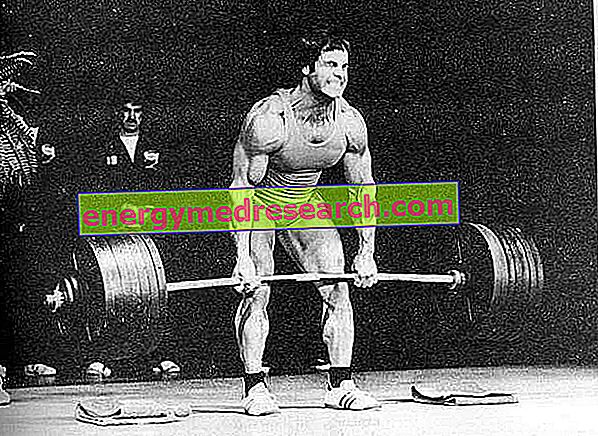Curated by Luca Zandonà
One of the most controversial topics, sometimes also because of statements by "professionals" in the sector, is what would like to train for muscular hypertrophy only suitable for bodybuilders or people in "preparation" for beach holidays.
As an industry professional and amateur bodybuilder, it is particularly frustrating to deal with alleged "experts" who denigrate people undergoing hypertrophy because they are considered useless or, worse still, because they can worsen the athletic condition with excessive body weight or lack of flexibility.
The objective of this article is therefore to give a brief but clear explanation of why the activity with weights aimed at muscular hypertrophy should be considered as an important component of the preparation for athletes.
Matter of strength
What do we mean by "force"? There are different qualities of strength but, generally speaking, we can consider it as the ability to overcome resistance .

Some of the main qualities of strength are:
- Absolute strength, considered the maximum strength that an individual can produce, regardless of body weight and lifting speed
- Relative strength, considered the maximum strength that an individual can produce considering his own body weight but independently of the speed of lifting
- Resistant strength, considered as an individual's ability to tolerate muscle tension during a long-lasting physical activity
- Reactive force, given the ability to quickly reverse an eccentric contraction in concentric contraction, also known as myotatic reflex
- Fast strength, given the ability of the neuromuscular system to produce the maximum amount of force in the shortest possible time
There are other sub-divisions of force considered important, the description of which, however, goes beyond the scope of this article. A clarification to make is the difference between strength and power; the latter in fact is considered the product of strength and speed, obviously a large amount of maximum force can increase the power but we must not forget the speed factor.
Strength and training
So what is the best way to increase strength? This is the point, there is no "best" method . The type of force required must therefore dictate the selection of the exercises, number of sets, repetitions, length of breaks, speed of movement and frequency of training.
In general we can say that:
- Relative force is trained at loads over 85% of the MR1
- The functional force is trained with loads between 79% and 84% of the MR1
- Hypertrophic strength is trained with loads between 70% and 78% of MR1
- Resistant force is trained at loads less than 69% of the MR1
By MR1 I mean the maximum resistance used to win a repetition . Let's say for example that an athlete can perform a flat bench repetition with a maximum of 100 kg, his 85% will be 85 kg, his 79% will be 79 kg, etc.

We can obtain a significant muscular hypertrophy, through different mechanisms, with methods for functional strength and hypertrophic strength; the difference between the two is that the functional force causes at the same time gains in maximum strength and hypertrophy while training for hypertrophic strength would seem to increase the muscular dimension with minor gains in maximum force.
Conclusions
The indications of these fundamental training principles are therefore to indicate that there is a strong correlation between strength and muscular dimensions; unless you decide to adopt workouts for relative strength, which promote a maximum strength increase through adaptations of neural origin rather than muscle, it is impossible to achieve muscle hypertrophy without a consequent increase in maximum strength. In the case of sports that require high levels of strength while keeping body weight to a minimum, as can be for martial arts, boxing or athletics, a workout using loads over 85% MR1 is therefore indicated, while in the case of athletic activities where the body weight is indifferent or can be used to your advantage, a use of workouts for functional and hypertrophic strength can without a doubt be considered effective.



